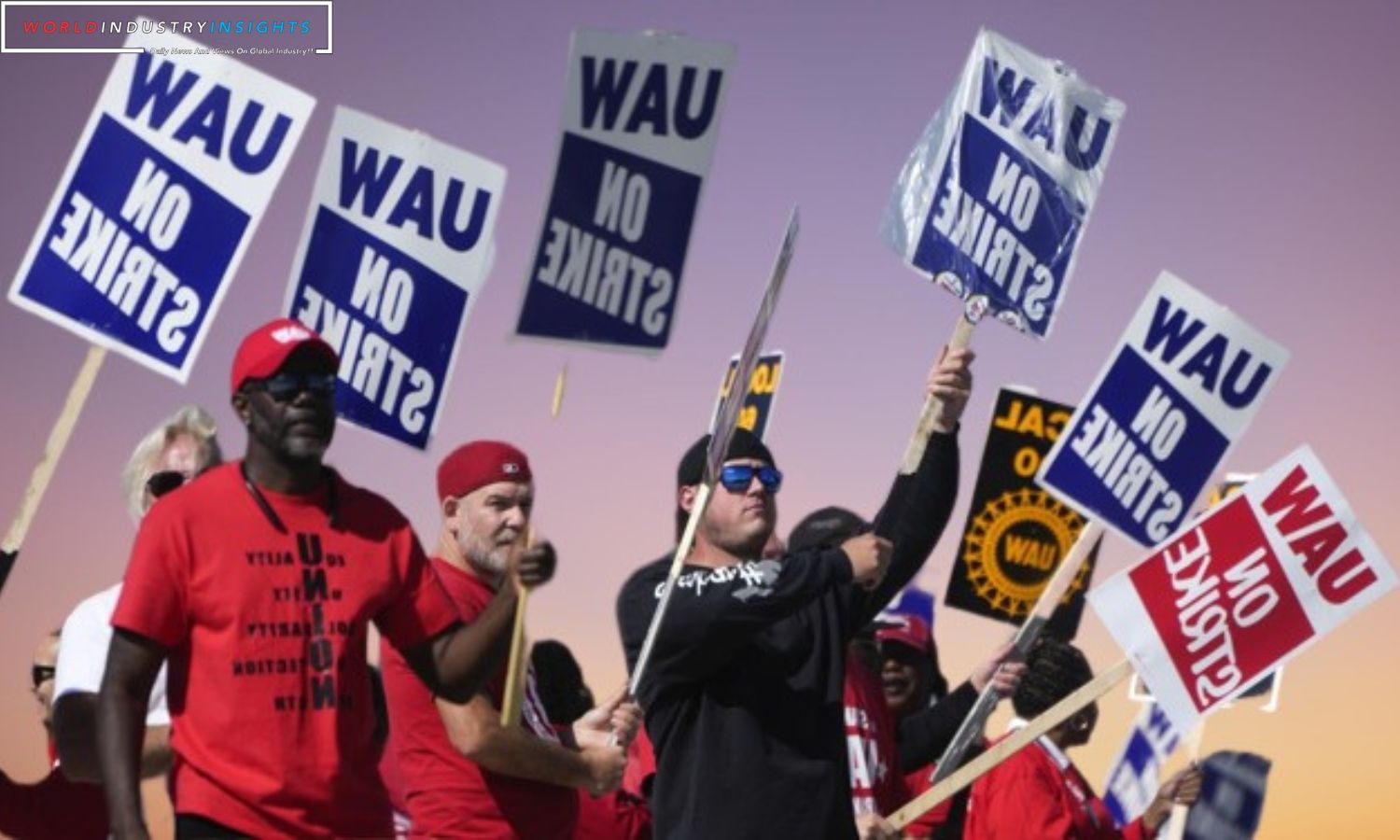UAW Strike Success: On Friday of last week, the United Auto Workers (UAW) agreed not to go on any more strikes against the Detroit Three auto plants. This decision was made because General Motors (GM.N) surprised everyone by being ready to let unionized workers work in joint-venture battery plants. This could be a turning point in the industry’s move toward electric vehicles.
Because G.M. gave up, Stellantis (STLAM.MI) and Ford Motor (F.N.) may decide to do the same. Suppose this domino effect leads to final agreements. In that case, it will strengthen the UAW’s position during the electric revolution in the auto business. In a live-streamed chat, UAW President Shawn Fain said, “Our strike is working, but we’re not there yet.”
While the UAW wants higher wages, the end of a two-tier wage system, and more union representation in all three types of battery factories, automakers have increased ideas for wage increases four times, linked wage increases to inflation, and made temporary workers better paid.
The UAW had been putting more and more pressure on different companies every week until Friday. Because of the threat of a strike at its Arlington, Texas, plant, which is known for making very profitable SUVs like the Cadillac Escalade, G.M. decided to unionize E.V. battery factories working under UAW contracts.
As sales of electric cars soar thanks to federal subsidies that encourage a switch to cleaner fuels, the UAW fights for fair pay and job protections for workers in this field. He said, “This was the last big problem.” Fiorani is Vice President of Global Vehicle Forecasting at AutoForecast Solutions. He thought this was a huge step forward.
However, Fain’s comments need to clarify whether the pay for workers at G.M.’s battery factory will be similar to that of union members at other plants. In South Korea, G.M. is building three Ultium joint-venture battery plants with L.G. Energy Solution (373220. K.S.). In the United States, G.M. is building a fourth battery factory with Samsung SDI (006400. K.S.) in Indiana.
Also Read: UAW Strike Hits Hard: GM, Ford Furlough 500 More Workers!
Harley Shaiken, a professor of labour at the University of California, Berkeley, said that G.M.’s decision to give up was a sign of the shift to electric vehicles. He thinks Stellantis, Ford, and G.M. will all follow through on G.M.’s promise in the master deal.
What would happen to the workers at the battery plant had been a big problem. Ford CEO Jim Farley said Fain used it as a bargaining chip to keep the deal from going. Because of the strike’s impact on the assembly lines, Ford fired 495 workers in Ohio and Michigan simultaneously.
Automakers have always been against putting battery plants under a master agreement, saying that most of them were joint-venture companies that needed permission from other majority owners. The fact that G.M. changed its mind shows that it wants a fair shift, as Fain said.
Chief Operating Officer of Stellantis North America, Mark Stewart, said that talks were progressing but still problems. Ford was quiet and didn’t say anything. As Tesla (TSLA.O) lowered the prices of its Model 3 and Model Y in the U.S., makers were pressured to make more money and compete with Tesla.
Fain mentioned the possibility of more strikes on Friday, which shows that the UAW knows where the auto business is weak. Trades are left wondering about possible closures because of the vague response. So far, the UAW has called for walkouts at 38 G.M. and Stellantis-run parts stores and five G.M. and Stellantis-run assembly plants.
Ford’s planned pay raise, which has been raised to 23% through early 2028, is the most important thing here. Suggested cost-of-living increases could mean a pay raise of almost 30%. Since the coordinated strikes started on September 15, Fain’s Friday video reports have become fascinating shows that draw people in.
It’s clear how the market feels about these events because at the close, shares of G.M. went up by over 2%, Ford’s went up by 0.8%, and Stellantis in Milan’s went up by 1%. As talks continue, the auto industry navigates the tricky ground of union demands and industry recalibration. It is very close to a major turning point.
Our Reader’s Queries
What did the UAW accomplish?
Following a six-week period of strikes, the UAW has successfully secured new deals from the three largest American auto companies. These agreements have resulted in the reinstatement of previously lost benefits, as well as new gains such as across-the-board wage increases. Additionally, the Belvidere Assembly Plant for Jeep-maker Stellantis has been reopened. This is a significant achievement for the UAW and a positive development for American auto workers.
How did the UAW win?
The UAW has adopted a fresh approach by exerting pressure on all three companies at once, instead of targeting one and using the resulting agreement as a template for the others. They have also resorted to strategically striking individual plants with minimal notice to maximize the impact on their operations. These new tactics have proven to be effective in achieving their goals.
How did the UAW strike affect the automotive industry?
If the UAW strike persists, automakers may have to divert their financial resources from electric vehicle investment to meet the demands of union workers. This could have a significant impact on their finances. The automakers are already preparing for a costly and prolonged UAW strike.
What deal did the UAW make?
The recent agreement between the UAW and GM is set to bring a significant boost to base wages, with a 25% increase in effect until April 2028. This will result in a cumulative rise of 33% for the top wage, which will be further compounded by estimated cost-of-living adjustments, bringing it to over $42 per hour.


